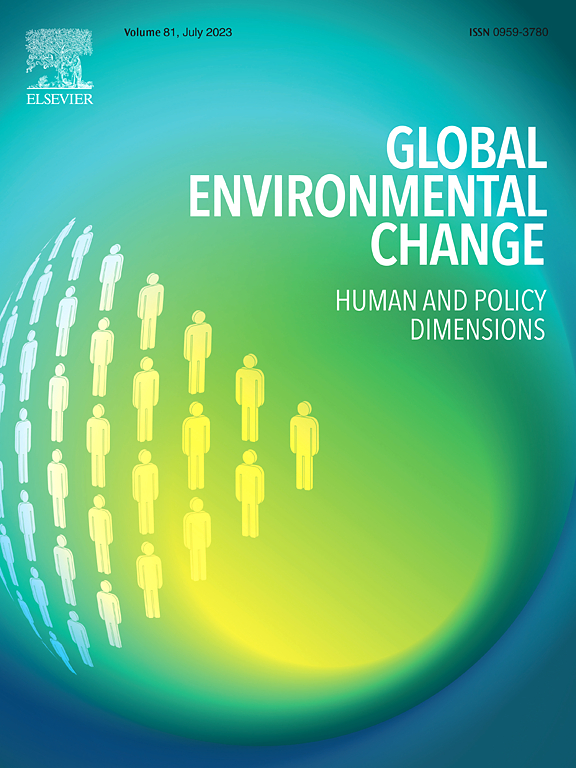Environmental impacts and food loss and waste in the U.S. aquatic food system
IF 9.1
1区 环境科学与生态学
Q1 ENVIRONMENTAL SCIENCES
引用次数: 0
Abstract
Aquatic food systems support global food and nutrition security, livelihoods, and economies, but put significant environmental pressure on the planet. The United States (U.S.) is the world’s fourth largest consumer and the largest importer of aquatic food, which makes it a good case for studying aquatic food systems. Here, we estimate the energy use, greenhouse gas emissions (GHGe) and blue water use by species, production method, product form, and stage of the U.S. supply chain, while accounting for trade and food loss and waste. We identified wide variation across species for energy use (40.2 to 259.1 MJ/kg), GHGe (3.7 to 22.2 kg CO2 eq/kg), and blue water use (15.8 to 1,851 l/kg). Capture fisheries and aquaculture on average used similar amounts of energy per unit of edible aquatic food; however, aquaculture emitted 54 % more GHGe and consumed 784 % more blue water than capture fisheries, due to the high GHGe and blue water intensity of aquaculture feed. Products with the lowest energy use were canned, fresh, and frozen sockeye salmon, frozen pollock, and frozen catfish. Products with the lowest GHGe were canned, fresh, and frozen sockeye salmon, frozen pollock, canned and frozen tuna, and frozen Atlantic salmon, All wild caught species had significantly lower blue water use impacts than farmed products. The production stage had the largest environmental impacts, but measuring production alone would miss 64 % of the energy, 36 % of the GHGe, and 21 % of the blue water used in the remainder of the supply chain. The processing stage was an important contributor to resource use for species with energy and water efficient production practices. Aquatic food in the U.S. supply is lost and wasted at an overall rate of 23 %; lost and wasted seafood contains 22 % to 24 % of the embodied energy, GHGe, and blue water in aquatic food systems. Compared to findings identified in the literature, aquatic foods in this study were lower in GHGe than beef, had a range of GHGe that extended above and below pork and poultry, and had higher GHGe than most legumes, and nuts. Estimating the environmental impacts and food loss and waste in the U.S. aquatic food system can help identify opportunities to enhance sustainability and resilience and support science communication about lower-impact foods and dietary patterns.
美国水生食物系统的环境影响、食物损失和浪费
水生粮食系统支持全球粮食和营养安全、生计和经济,但也给地球带来了巨大的环境压力。美国是世界第四大水产食品消费国和最大进口国,这使得它成为研究水产食品系统的一个很好的案例。在这里,我们按物种、生产方法、产品形式和美国供应链的阶段估算了能源使用、温室气体排放(GHGe)和蓝色水的使用,同时考虑了贸易和粮食损失和浪费。我们发现,不同物种之间的能源使用(40.2至259.1 MJ/kg)、温室气体(3.7至22.2 kg CO2当量/kg)和蓝水使用(15.8至1851 l/kg)存在很大差异。捕捞渔业和水产养殖业平均每单位可食用水产食品消耗的能量相似;然而,由于水产养殖饲料的高温室气体排放和蓝水强度,水产养殖比捕捞渔业多排放54%的温室气体,多消耗784%的蓝水。能源消耗最低的产品是罐装、新鲜和冷冻红鲑鱼、冷冻鳕鱼和冷冻鲶鱼。温室气体排放量最低的产品是罐装、新鲜和冷冻红鲑鱼、冷冻鳕鱼、罐装和冷冻金枪鱼和冷冻大西洋鲑鱼,所有野生捕捞物种的蓝水利用影响均显著低于养殖产品。生产阶段对环境的影响最大,但仅衡量生产就会错过供应链其余部分使用的64%的能源,36%的温室气体和21%的蓝水。加工阶段是具有能源和水效率生产实践的物种资源利用的重要贡献者。在美国,水生食品的损失和浪费率为23%;在水产食品系统中,损失和浪费的海产品含有22%至24%的隐含能量、温室气体和蓝水。与文献中发现的结果相比,本研究中水产食品的温室气体排放量低于牛肉,其温室气体排放量范围高于猪肉和家禽,高于大多数豆类和坚果。评估美国水生食品系统的环境影响、食物损失和浪费,有助于确定提高可持续性和弹性的机会,并支持有关低影响食品和饮食模式的科学交流。
本文章由计算机程序翻译,如有差异,请以英文原文为准。
求助全文
约1分钟内获得全文
求助全文
来源期刊

Global Environmental Change
环境科学-环境科学
CiteScore
18.20
自引率
2.20%
发文量
146
审稿时长
12 months
期刊介绍:
Global Environmental Change is a prestigious international journal that publishes articles of high quality, both theoretically and empirically rigorous. The journal aims to contribute to the understanding of global environmental change from the perspectives of human and policy dimensions. Specifically, it considers global environmental change as the result of processes occurring at the local level, but with wide-ranging impacts on various spatial, temporal, and socio-political scales.
In terms of content, the journal seeks articles with a strong social science component. This includes research that examines the societal drivers and consequences of environmental change, as well as social and policy processes that aim to address these challenges. While the journal covers a broad range of topics, including biodiversity and ecosystem services, climate, coasts, food systems, land use and land cover, oceans, urban areas, and water resources, it also welcomes contributions that investigate the drivers, consequences, and management of other areas affected by environmental change.
Overall, Global Environmental Change encourages research that deepens our understanding of the complex interactions between human activities and the environment, with the goal of informing policy and decision-making.
 求助内容:
求助内容: 应助结果提醒方式:
应助结果提醒方式:


